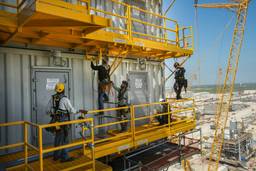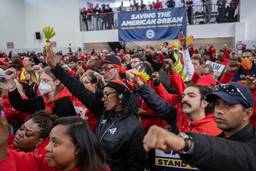
While you are considering a hamburger tonight, let me tell you something you probably weren’t thinking about.
That chunk of bright red meat in the plastic wrapper probably came from Nebraska. One out of every five steaks or hamburgers comes from Nebraska, the number one state in terms of red meat production. And the meatpacking industry has grown in Nebraska as our budgets, diets and time demands have changed, leading more of us gobble up hamburgers.
That hamburger meat probably comes from a small Nebraska town where a large meat processing plant got off the ground not too long ago, a plant in which most workers probably earn today about the same as meat packers did 40 years ago when you adjust costs.
While meatpacking plants once thrived in Midwestern cities, today they are located in small towns across the heartland. Cutting costs is a major reason why this shift took place.
A good number of the workers at the plants in Nebraska are immigrants, who are probably not union members. If you stopped the workers in the parking lot on their home, they would probably unload a heap of gripes about their jobs.
And their major gripe would probably be that the line carrying the meat, the line that they have to stand by all day line, the line where the cutting and accidents takes place, is too fast for them.
So fast, it is virtually killing them.
Why does line speed matter? A faster line can mean more injuries and it can also mean less safety when it comes to keeping the food clean. Consider the New York Times story from early last month that described workers at a Nebraska plant complaining that the hectic line step didn’t give them enough time to clean out feces from the animals whizzing by them.
But back to the workers.
Three out of four workers reached for a recent study by Nebraska Appleseed—a nonprofit, nonpartisan public interest law project based in Lincoln—said the line speed at their plant had increased, while nine out of ten also said that the number of workers on the line had either decreased or not changed. There was no one extra to deal with the line speed-up.
Two-thirds of the workers said they had been injured on the job in the last year, a figure that, as Appleseed points out, is much higher than the government’s estimate for workplace injuries for meatpacking workers. And the injury rate among meatpacking workers, according to government statistics, is twice that for manufacturing workers.
In their own words, these workers said:
“The supervisors take advantage of the fact that you need the work – they yell at you, you don’t have the right to go the bathroom, etc.”
“Sometimes they ignore you for being Hispanic.”
“The line is too fast, there’s little space, there aren’t sufficient personnel.”
“How can it be safe with that line so fast? It’s the same and they don’t care.”
“They should recognize that we are not machines.”
I just thought I would bring this up, in case you were wondering about who made the meat for tonight’s meal.
Click here for the report.
A former labor writer for the Chicago Tribune, Stephen Franklin is a Pulitzer Prize finalist and an adjunct professor at the University of Illinois Urbana-Champaign School of Labor and Employment Relations.







